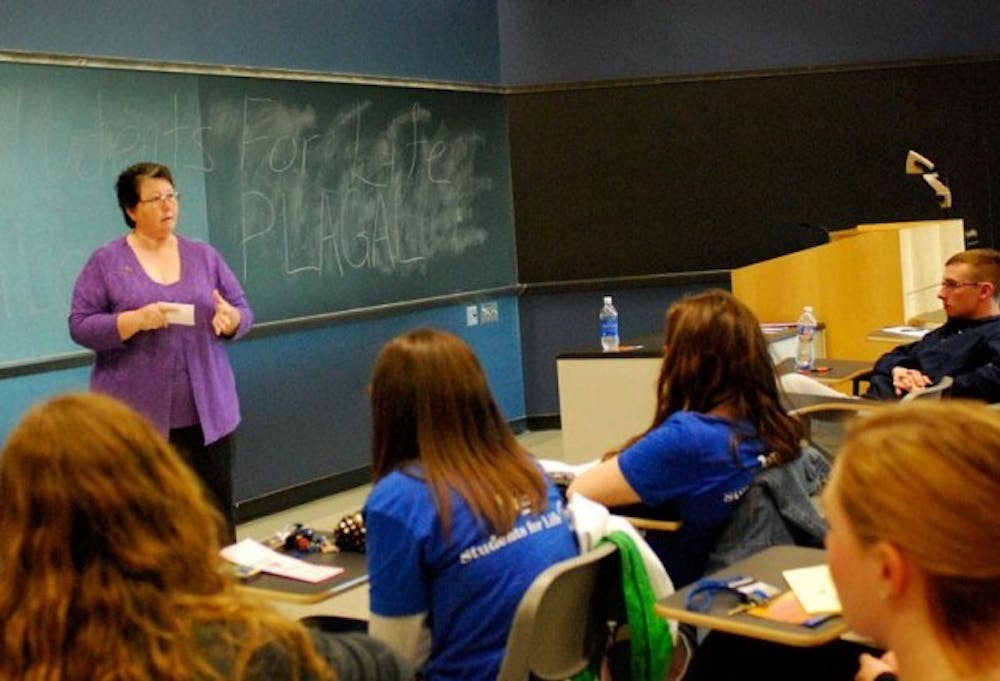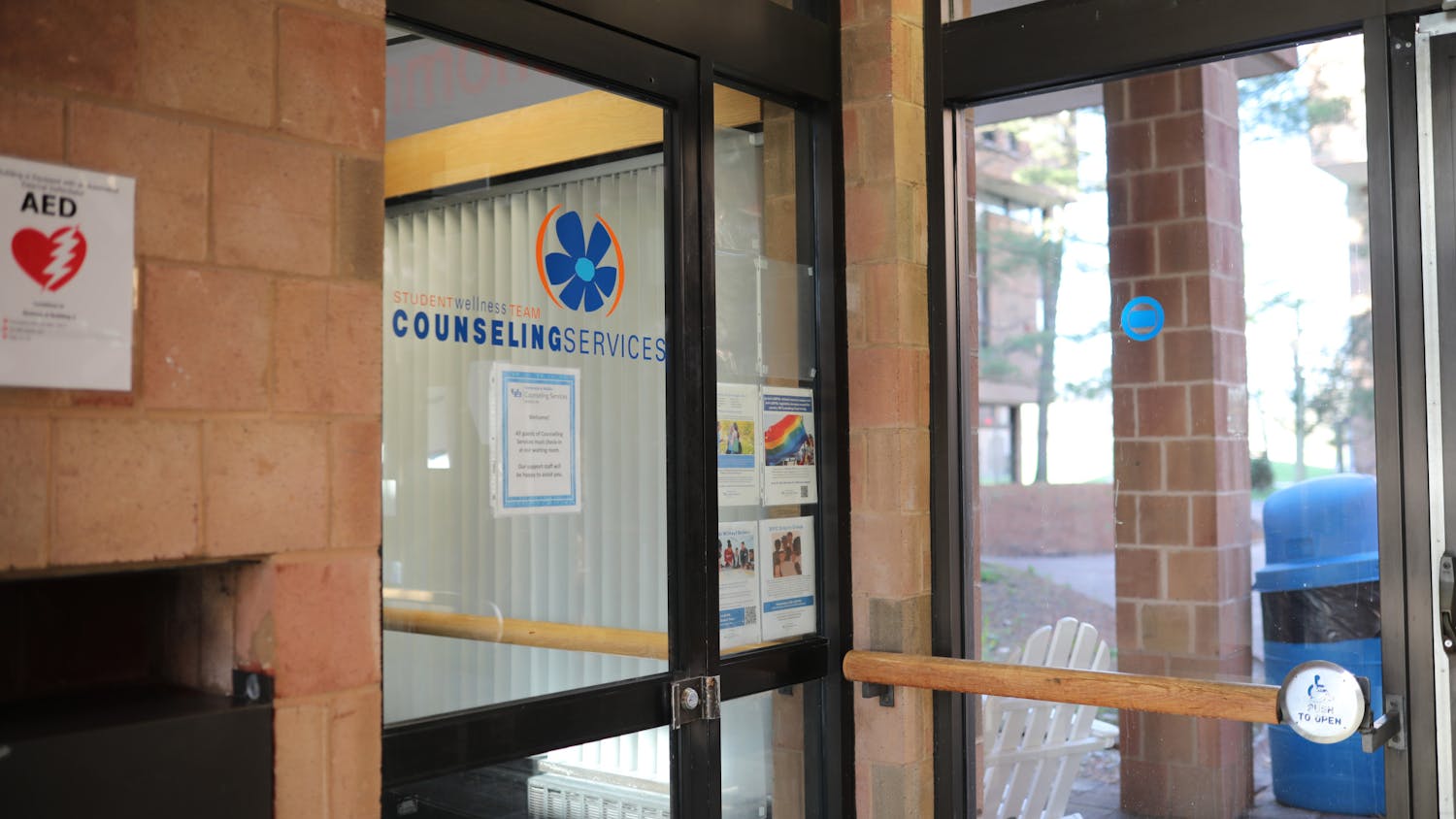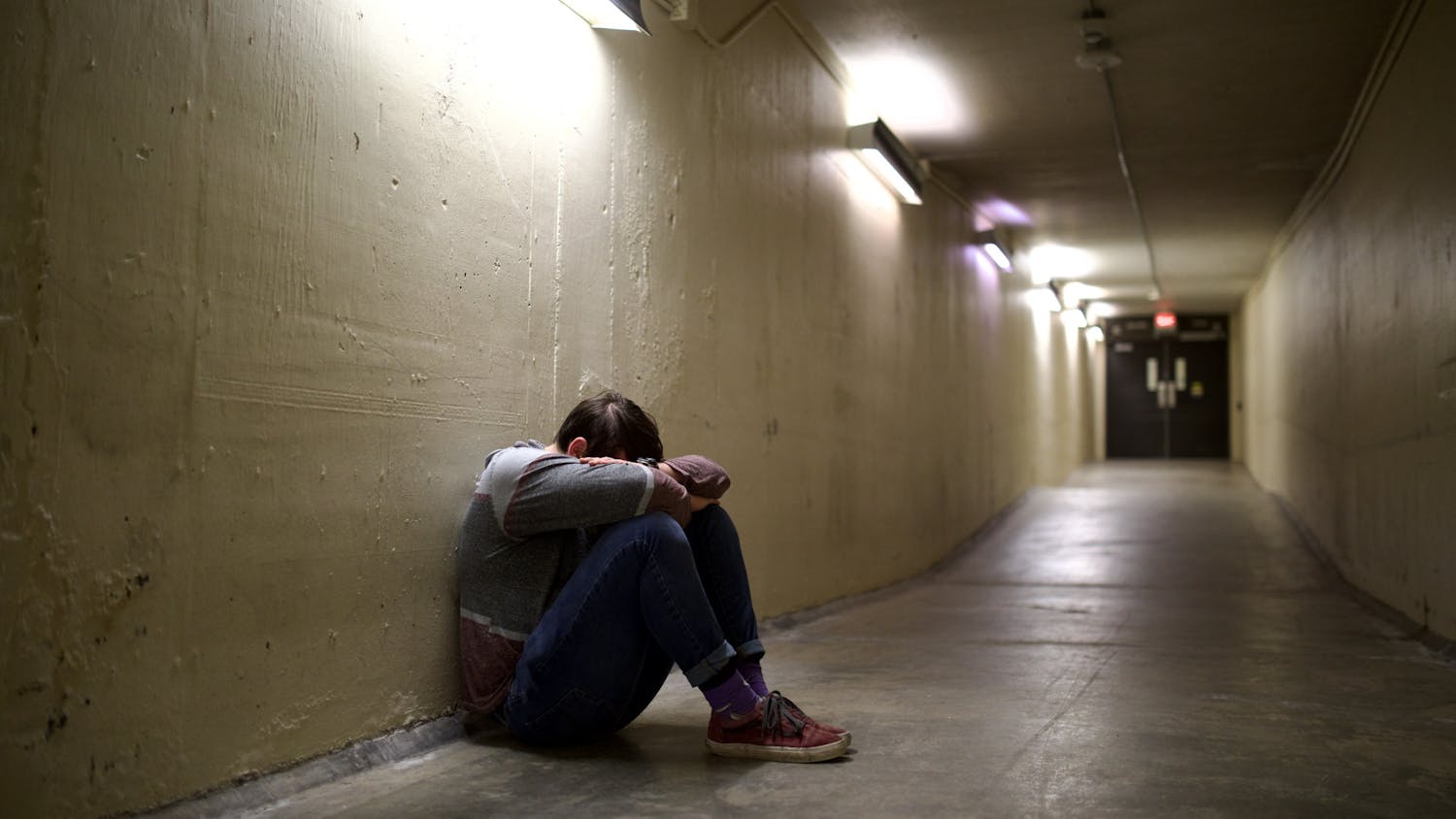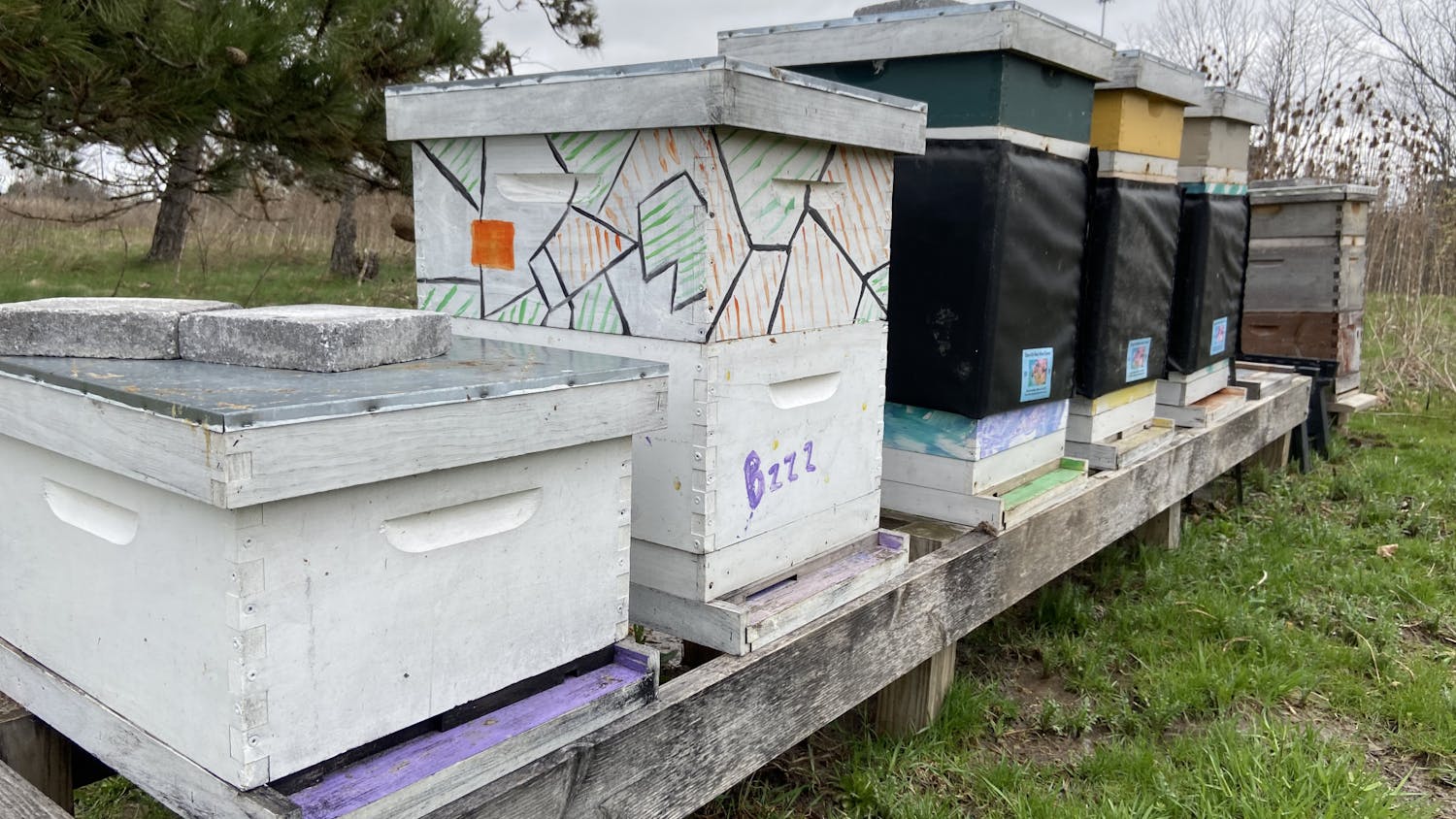Cecilia Brown was 18 years old when she discovered she was pregnant.
Brown, then a freshman in college with little money, made a decision that she would grow to regret for the rest of her life: She got an abortion.
It happened Nov. 3, 1981 - a day she said she will never forget.
"The doctor manually opened my cervix to suction out my baby," Brown said. "I looked over and saw where my baby ended up. It was completely torn to shreds. All I could see was its little hand in the container."
Brown was the guest speaker for an event hosted by the UB Students for Life Wednesday in NSC 228. She is an ambassador for the Pro-Life Alliance of Gays and Lesbians (PLAGAL) and came to speak to students about the anti-abortion stance. The event was an attempt to bring people from different platforms to talk openly about the topic of abortion.
"We want to spread the message that the abortion issue is not just a conservative, religious, right-[wing] issue," said Christine Schaefer, a junior history and German major. "It's a human issue."
Schaefer said the club reached out to both liberal and conservative groups to start a discussion on abortion rights and the anti-abortion movement.
Brown's journey into the anti-abortion movement began when she had her own abortion, though she did not know it yet.
"I don't know what drugs they had given me, but I don't think they were working, and I started to scream," Brown said. "I asked the doctors to stop, and one of the nurses looked at me and said, 'This is what you wanted.'"
Brown explained the physical and emotional toll her abortion had on her was too much for her to handle. She dropped out of school, went into a deep depression and started abusing alcohol and drugs.
Apart from dealing with her abortion, Brown also struggled with her sexual identity. She said she always knew she was a lesbian, but growing up in a conservative Catholic home, she had to pretend she was heterosexual to stay in her father's good graces.
Brown continued to live the life of a heterosexual woman and became pregnant again with her daughter. Brown chose to keep her child and later got married.
After the birth of her daughter, Brown lost her job and struggled to provide for her newborn. With all the turmoil Brown went through being a new mother, she realized she had yet to reconcile with her abortion.
"Every Nov. 3, I would remember this is the day that my child was killed," Brown said. "I realized that I needed to heal. I needed to get past my abortion so that I could raise my daughter."
The primary part of Brown's healing came when she admitted to everyone around her that she was a lesbian. When Brown no longer had to hide behind a false sexuality, she realized there were other aspects of her life that she was opposed to, namely her abortion.
Brown decided she wanted to become an active member in her community and joined the anti-abortion campaign.
Brown had difficulty finding an anti-abortion group that best fit her, she said. She was repulsed the first time she attended an anti-abortion protest outside of an abortion clinic.
The protestors were holding several religious signs and declared women who got abortions were damned to go to hell.
"I kept thinking to myself, what if the girls who go in there change their minds? How could they look into the eyes of the people that condemned them to hell and ask them for help?" Brown said.
Brown went through several different anti-abortion organizations before she found PLAGAL. Brown said through PLAGAL, she was able to fully heal. She was finally able to move past her abortion. She began to dedicate herself to a life of Buddhism, using meditation to help her in times of stress and crisis.
In the midst of all of her healing, Brown found out her daughter was pregnant. She was able to convince her to keep the child, and her daughter gave birth to a boy named Nathan. In the following years, Nathan was diagnosed with "attention deficit hyperactivity disorder," or ADHD, and a spectrum of Autism. The financial toll that came with raising Nathan managed to ignite in Brown a desire to advocate for more welfare for women and their children.
"A big argument of the [abortion-rights group] is that [anti-abortion groups] don't care about the child after it's born, and to a certain extent they're right," Brown said.
She said right-wing, conservative politicians advocate for the illegalization of abortion but don't look enough at what drives women to abort in the first place.
Brown often tries to start funds for new mothers who choose not to raise their children themselves. Though Brown admits she has never actively sought the illegalization of abortions, it is something she believes should occur.
This stance was the most troubling for abortion-rights students who attended the event.
"[Anti-abortion groups] tend to idealize the world," said Ashley Arena, a senior psychology major. "The welfare that [Brown] is fighting for isn't here yet. Until there is a world where abortions are no longer an option because of aid and proper education, it should still be an option for the women that want it."
After Brown finished her talk, she opened the floor for questions. Abortion-rights students who come had several questions for Brown, mainly on the use of photography of aborted fetuses in anti-abortion demonstrations. Brown maintained that photos are necessary to start discussion and stir emotions.
email: features@ubspectrum.com





